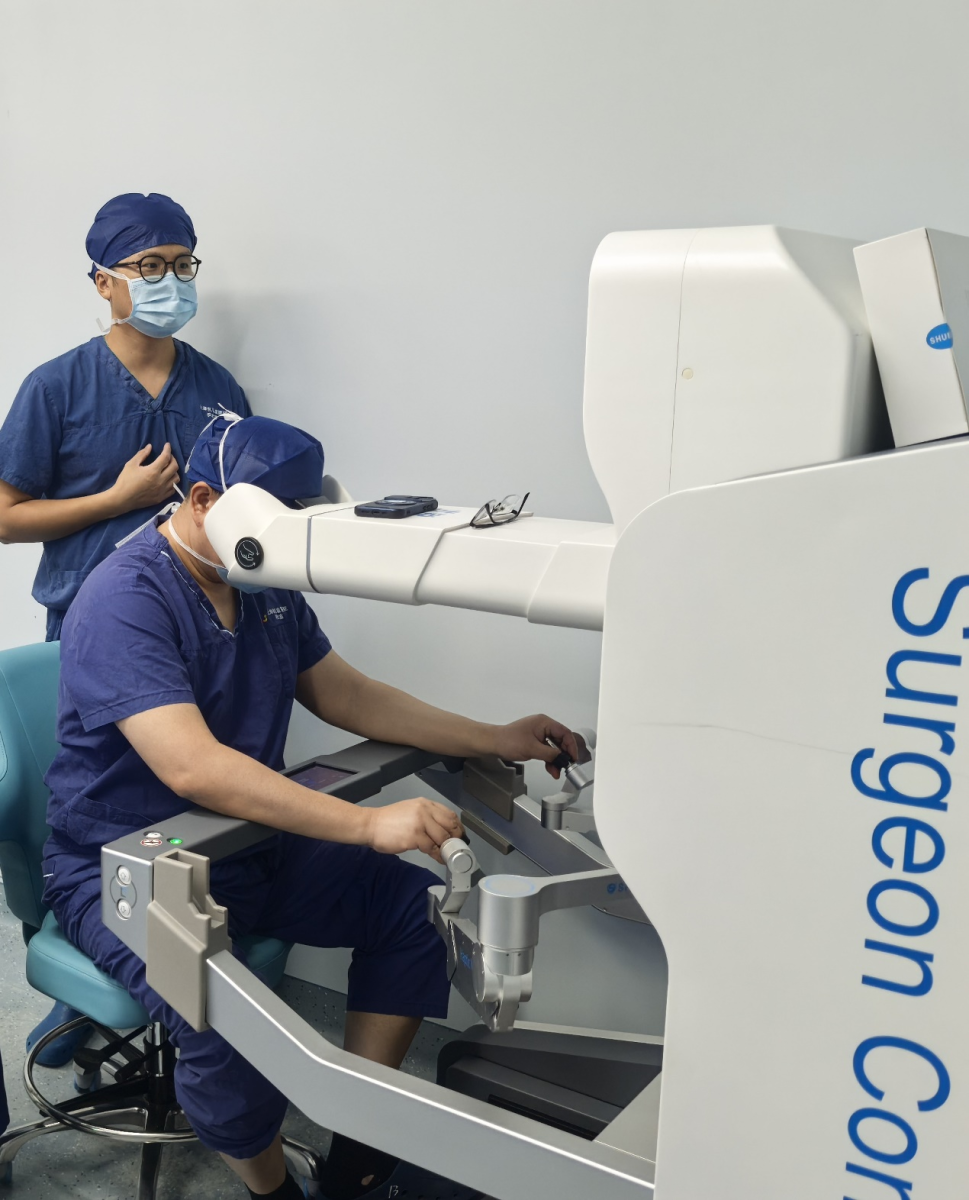

On April 16, 2025, the General Surgery Department of Shanghai Children's Hospital successfully performed the world's first Ladd procedure (corrective surgery for congenital intestinal malrotation) in a child using a domestically developed single-port laparoscopic robotic surgical (SP) system. This landmark achievement not only signifies a major breakthrough in the application of domestically developed intelligent surgical systems for complex pediatric minimally invasive interventions but also pioneers a transformative pathway for advancing minimally invasive approaches in high-difficulty pediatric surgeries.

Clinical Technology Advancement | Snake-Arm Surgical Robot Facilitates Complex Pediatric Procedures
A 5-year-old patient diagnosed with congenital intestinal malrotation underwent a Ladd procedure involving sequential surgical steps: lysis of Ladd's bands, complete reduction of the small intestine, total intestinal rearrangement, and appendectomy. The Ladd procedure is among the most technically demanding abdominal surgeries in pediatric surgery, requiring extensive intestinal derotation and anatomical repositioning from the duodenum to the ileocecal region. Critical challenges include adjusting intestinal orientation (placing the small intestine in the right abdomen and the colon in the left) while preserving vascular integrity to ensure intestinal perfusion.

Guided by the Shurui snake-arm single-port robotic surgical system, a team led by Dr. Zhu Haitao, Chief Physician of the General Surgery Department, completed the operation through a single 2.5-cm umbilical incision, achieving surgical objectives with minimal blood loss of 2ml.
Historically, complex pediatric gastrointestinal malformations required open surgeries or multi-port laparoscopic approaches, which often forced surgeons to compromise between operative spatiality, precision, and minimally invasive benefits. The successful integration of domestically developed robotic systems into pediatric minimally invasive surgery—particularly in technically demanding procedures like the Ladd procedure that demand both panoramic visualization and extensive operative range—demonstrates China’s robotic platforms now possess the clinical foundation to standardize minimally invasive solutions for complex pediatric surgeries.
Compared to adults, pediatric patients present unique surgical challenges: fragile tissues, narrower luminal structures, and delicate vasculature within confined anatomical spaces. These constraints elevate precision requirements, making robotic assistance increasingly indispensable. Conventional multi-port robotic systems necessitate 3-5 ports on the abdominal wall, offering limited trauma reduction for pediatric patients. Moreover, their mandated 5-8 cm spacing between skin incisions risks tissue traction injuries.
The emergence of single-port robotic systems like the Shurui platform addresses these limitations through transformative engineering. Its proprietary snake-arm configuration establishes a dynamic intra-abdominal operative triangle, enabling omnidirectional articulation for executing intricate maneuvers within the peritoneal cavity.
Dr. Zhu Haitao, Chief Surgeon, emphasized: "This successful procedure not only validates the clinical reliability of China’s single-port robotic systems but also charts a practical roadmap for expanding minimally invasive approaches to more complex pediatric surgeries. Through continued clinical innovation, we aim to elevate Chinese surgical robotics from ‘clinically viable’ to ‘preferentially optimal’ in pediatric care."
Technological Leap | China’s Intelligent Manufacturing Advances to the Forefront of Precision Minimally Invasive Pediatric Care
As an independently developed innovation platform, the Shurui robotic system—with its groundbreaking single-port snake-arm configuration and operating protocols that harmonize dexterity with precision—is accelerating the clinical implementation of domestically developed alternatives to high-complexity minimally invasive surgeries. Particularly for pediatric populations, where stringent demands for intraoperative trauma control and postoperative recovery prevail, the ongoing validation and refinement of indigenous robotic systems signal their transformative potential for broader pathological applicability.
Amid the global ascendancy of Chinese manufacturing, pediatric minimally invasive surgery is approaching a new epochal inflection point.
Industry-Academia Integration | Tripartite Collaboration Accelerates Clinical Translation of China’s Pediatric Intelligent Surgical Devices Shanghai Children's Hospital, as China's earliest-established and one of Shanghai's highest-volume pediatric specialty hospitals, leverages its extensive clinical resources to pioneer translational research in child health and disease prevention. To optimize pediatric expertise and catalyze high-impact, market-ready innovations, the hospital proactively partners with enterprises across five strategic domains: precision diagnostics, gene therapy, health management, digital therapeutics, and medical device development, fostering complementary advantages and resource synergies.
The successful application of single-port robotic surgery was enabled by the hospital’s "International Innovation Demonstration Center for Single-Port Robotic Surgery"—a tripartite collaboration platform integrating Shanghai Jiao Tong University’s National Major Science & Technology Infrastructure for Translational Medicine, the Pierro Pediatric Surgical Disease Translational Research Lab at Shanghai Children's Hospital, and Shurui (Shanghai) Medical Technology Co., Ltd. This center spearheads frontier research in intelligent minimally invasive surgical devices, driving original R&D and clinical conversion of pediatric robotic technologies, AI-enhanced surgical systems, and advanced instrumentation.
As a national leader in pediatric minimally invasive surgery, Shanghai Children's Hospital has again demonstrated technological leadership through the world's first single-port robotic-assisted Ladd procedure. This achievement not only validates the hospital’s deep technical expertise in complex minimally invasive interventions but also establishes critical infrastructure for scaling domestic high-end medical devices in specialized pediatric surgeries.

 Important Notes
Important Notes
The SHURUI Single-port Endoscopic Surgical System (SR-ENS-600), developed and produced by Beijing Surgerii Robotics Company Limited, has obtained the CE marking for urologic laparoscopic surgical procedures, gynecologic laparoscopic surgical procedures, general laparoscopic surgical procedures, and thoracoscopic surgical procedures. It is intended for use by trained surgeons in an operating room environment in accordance with the representative, specific procedures set forth in the User Manual.
Safety and Performance Information
Beijing Surgerii Robotics Co., Ltd. owns Surgerii®, SHURUI®, and other trademarks and may not be used without permission.